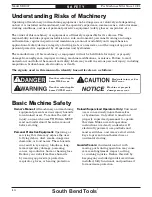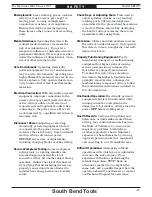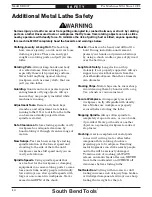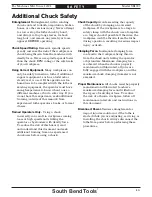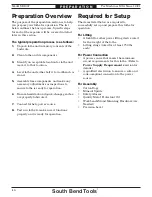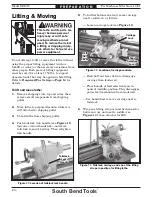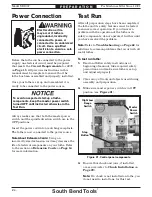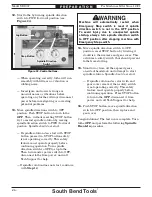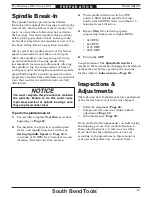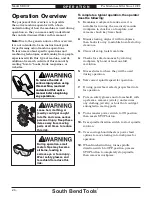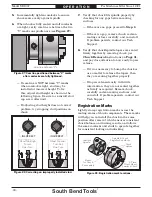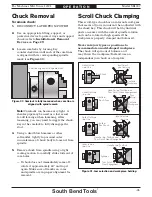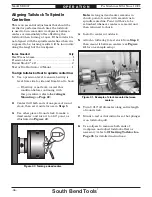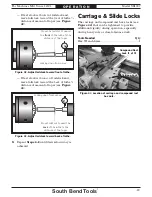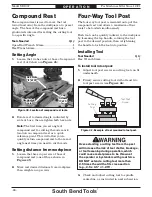
-24-
For Machines Mfd. Since 12/21
South Bend Tools
Model SB1007
P R E P A R A T I O N
Test Run
After all preparation steps have been completed,
the lathe and its safety features must be tested
to ensure correct operation. If you discover a
problem with the operation of the lathe or its
safety components, do not operate it further until
you have resolved the problem.
Note:
Refer to Troubleshooting on Page 62 for
solutions to common problems that occur with all
metal lathes.
To test run lathe:
1.
Read and follow safety instructions at
beginning of manual, take required safety
precautions, and make sure lathe is set up
and adjusted properly.
2.
Clear
away all tools and objects used during
assembly and preparation.
3.
Make sure master power switch is in OFF
position (see Figure 21).
Figure
Figure 21. Control panel components.
. Control panel components.
4.
Ensure that chuck and jaws, if installed,
are secure (refer to Chuck Installation on
Page 29).
Note:
If a chuck is not installed on lathe, you
do not need to install one for this test.
Power Connection
Electrocution or fire
may occur if lathe is
ungrounded, incorrectly
connected to power, or
connected to an undersized
circuit. Use a qualified
electrician to ensure a safe
power connection.
Before the lathe can be connected to the power
supply, an electrical circuit must be prepared
that meets the Circuit Requirements for 220V
on Page 15. All previous instructions in this
manual must be complete to ensure that the
lathe has been assembled and properly installed.
Once your lathe is set up and assembled, it is
ready to be connected to the power source.
To avoid unexpected start-up of lathe
components, keep the master power switch
turned OFF until instructed otherwise in the
Test Run.
Always make sure that both the master power
switch and the spindle direction switch are in the
OFF positions.
Insert the power cord into a matching receptacle.
The lathe is now connected to the power source.
Note About Extension Cords:
Using an
incorrectly sized extension cord may decrease the
life of electrical components on your lathe. Refer
to the section on Extension Cords on Page 16
for more information.
High/Low
High/Low
Range
Range
Switch
Switch
Master
Master
Power
Power
Switch
Switch
Stop
Stop
Button
Button

